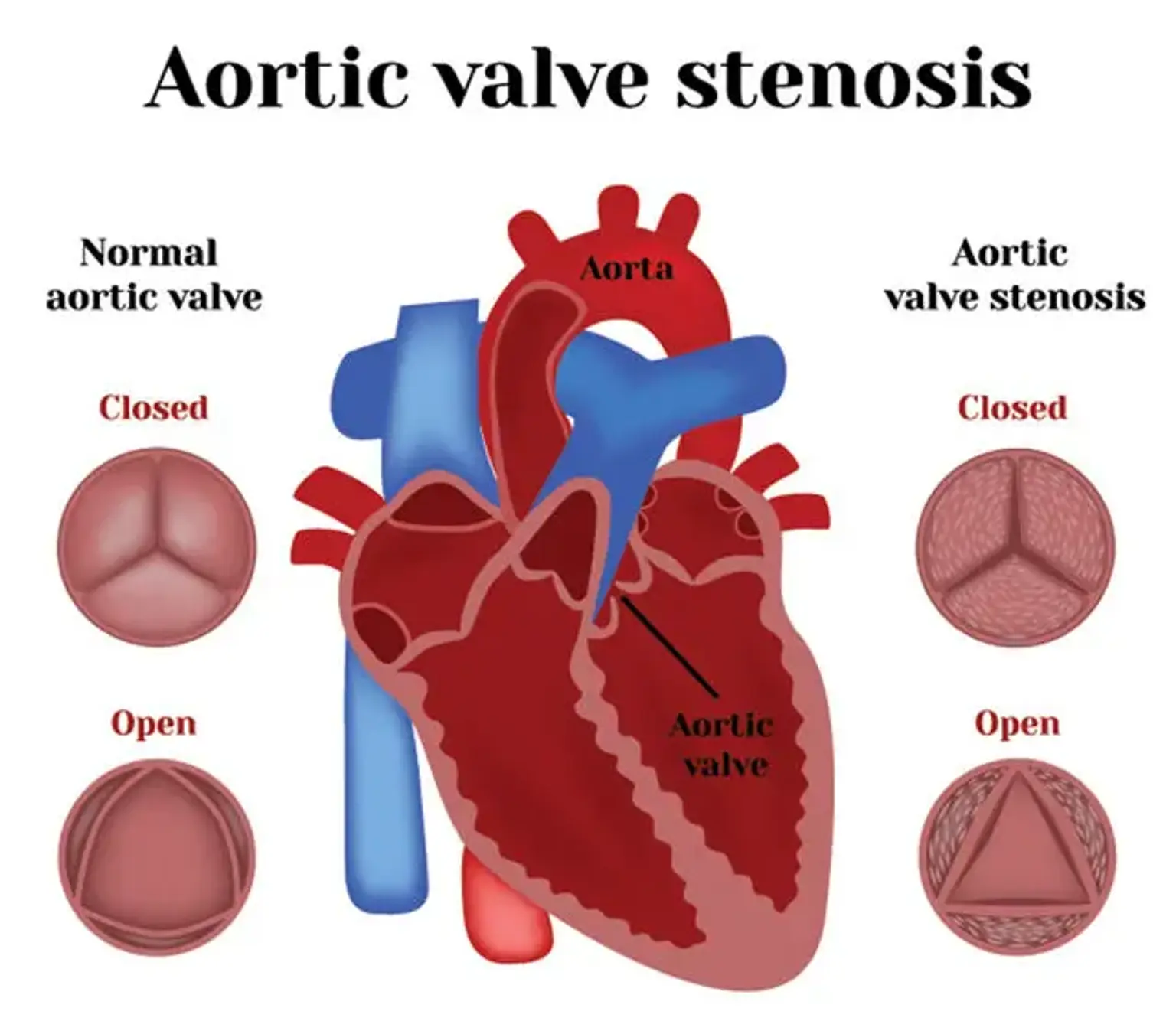Aortic valve stenosis
Aortic valve stenosis is the most prevalent and dangerous valve disease concern. The aortic valve aperture narrows due to aortic stenosis. As a result, it reduces blood flow from the left ventricle towards the aorta and can influence the left atrium's pressure.
Some people develop aortic valve stenosis as a result of a congenital heart abnormality known as a bicuspid aortic valve. However, the condition is usually caused by aging since calcium or scarring destroys the valve and restricts blood flow.
